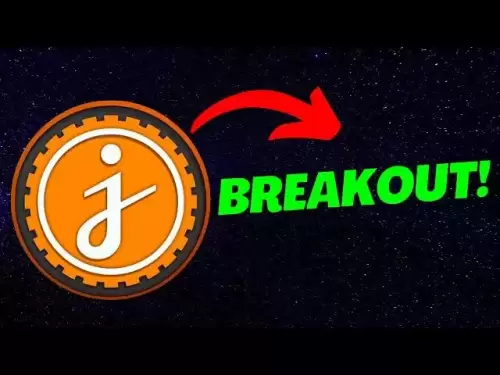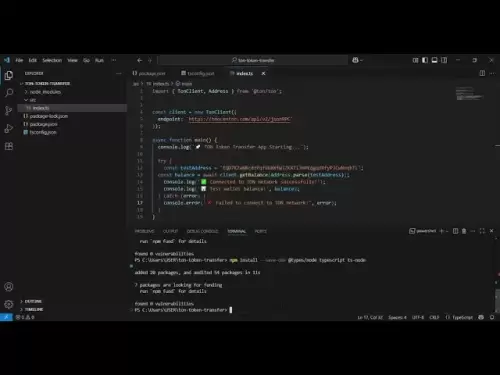-
 Bitcoin
Bitcoin $118,841.1054
1.02% -
 Ethereum
Ethereum $3,364.2689
7.44% -
 XRP
XRP $3.0337
3.93% -
 Tether USDt
Tether USDt $1.0004
0.04% -
 BNB
BNB $708.2059
2.49% -
 Solana
Solana $173.2385
5.74% -
 USDC
USDC $0.9999
-0.01% -
 Dogecoin
Dogecoin $0.2121
6.85% -
 TRON
TRON $0.3090
2.81% -
 Cardano
Cardano $0.7628
2.25% -
 Hyperliquid
Hyperliquid $46.8391
-2.08% -
 Stellar
Stellar $0.4537
0.15% -
 Sui
Sui $3.9529
-2.88% -
 Chainlink
Chainlink $16.6414
3.72% -
 Hedera
Hedera $0.2354
1.52% -
 Bitcoin Cash
Bitcoin Cash $499.1285
0.43% -
 Avalanche
Avalanche $22.6400
0.57% -
 Shiba Inu
Shiba Inu $0.0...01438
4.88% -
 UNUS SED LEO
UNUS SED LEO $8.8507
-0.64% -
 Toncoin
Toncoin $3.1498
2.35% -
 Litecoin
Litecoin $97.4954
1.21% -
 Polkadot
Polkadot $4.1541
1.50% -
 Monero
Monero $331.4406
-1.03% -
 Pepe
Pepe $0.0...01350
5.24% -
 Uniswap
Uniswap $8.9103
-5.01% -
 Bitget Token
Bitget Token $4.7540
4.51% -
 Dai
Dai $0.9999
-0.02% -
 Ethena USDe
Ethena USDe $1.0008
0.00% -
 Aave
Aave $322.3328
-1.63% -
 Bittensor
Bittensor $431.8026
-0.50%
How to set the volume weighted indicator parameters? Short-term reference
Volume weighted indicators like VWAP, VWMA, MFI, and OBV help traders analyze market trends and make timely decisions in short-term crypto trading.
Jun 09, 2025 at 10:13 am
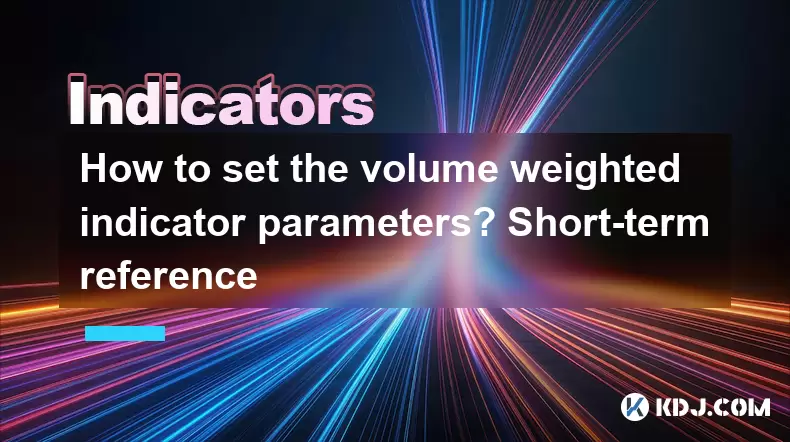
Introduction to Volume Weighted Indicators
Volume Weighted Indicators are essential tools in the cryptocurrency trading world, used to analyze the strength of price movements based on trading volumes. These indicators help traders make informed decisions by providing insights into market trends and potential reversals. When setting up these indicators, understanding how to adjust the parameters for short-term reference is crucial for optimizing trading strategies.
Understanding Volume Weighted Average Price (VWAP)
The Volume Weighted Average Price (VWAP) is a widely used volume weighted indicator. It calculates the average price of an asset weighted by the volume traded during a specific period. For short-term trading, setting the VWAP parameters correctly can help traders identify intraday trends and make timely decisions.
To set up VWAP for short-term reference, follow these steps:
- Select the Time Frame: Choose a short-term time frame, such as 1-minute, 5-minute, or 15-minute charts. This allows for quick analysis of intraday price movements.
- Adjust the Calculation Period: Set the VWAP calculation period to match the chosen time frame. For example, if using a 5-minute chart, the VWAP should be calculated over the same 5-minute intervals.
- Apply the Indicator: Add the VWAP indicator to your trading platform. Most platforms allow you to customize the period and time frame directly from the indicator settings.
Setting Up the Volume Weighted Moving Average (VWMA)
Another useful volume weighted indicator is the Volume Weighted Moving Average (VWMA). This indicator combines the principles of moving averages with volume data, providing a more comprehensive view of market trends.
To set up VWMA for short-term reference, consider the following steps:
- Choose the Moving Average Type: Decide on the type of moving average you want to use (e.g., simple, exponential, or weighted). For short-term trading, an exponential moving average (EMA) is often preferred due to its responsiveness to recent price changes.
- Set the Period: Select a short period for the VWMA, typically between 5 to 20 periods. This ensures the indicator reacts quickly to volume changes.
- Apply the Indicator: Add the VWMA to your chart and adjust the period and moving average type as needed. Ensure that the volume data is accurately reflected in the calculation.
Configuring the Money Flow Index (MFI)
The Money Flow Index (MFI) is a momentum indicator that uses both price and volume data to measure buying and selling pressure. For short-term trading, setting the MFI parameters correctly can help identify overbought or oversold conditions.
To set up the MFI for short-term reference, follow these steps:
- Select the Time Frame: Choose a short-term time frame, such as 1-minute, 5-minute, or 15-minute charts, to focus on intraday trends.
- Set the Period: Typically, the MFI is calculated over a 14-period window. For short-term trading, you may want to reduce this to 5 to 10 periods to increase sensitivity to recent price and volume changes.
- Apply the Indicator: Add the MFI to your chart and adjust the period as needed. Monitor the MFI values to identify potential entry and exit points.
Using the On-Balance Volume (OBV) Indicator
The On-Balance Volume (OBV) indicator is another volume weighted tool that helps traders understand the flow of volume in relation to price movements. For short-term trading, setting up the OBV correctly can provide valuable insights into market trends.
To set up the OBV for short-term reference, consider these steps:
- Select the Time Frame: Choose a short-term time frame that aligns with your trading strategy, such as 1-minute, 5-minute, or 15-minute charts.
- Apply the Indicator: Add the OBV indicator to your chart. Most trading platforms will automatically calculate the OBV based on the selected time frame.
- Interpret the Data: Monitor the OBV line to identify divergences between price and volume. A rising OBV line with a falling price may indicate a potential bullish reversal, while a falling OBV line with a rising price may signal a bearish reversal.
Fine-Tuning Volume Weighted Indicators for Short-Term Trading
Fine-tuning volume weighted indicators for short-term trading involves adjusting parameters to suit specific market conditions and trading strategies. Here are some tips to help you optimize these indicators:
- Experiment with Different Periods: Test various periods for each indicator to find the settings that best align with your trading style. Shorter periods increase sensitivity, while longer periods provide more stable signals.
- Combine Multiple Indicators: Use a combination of volume weighted indicators to gain a more comprehensive view of the market. For example, combining VWAP with VWMA and MFI can help confirm trends and potential reversals.
- Monitor Volume Patterns: Pay close attention to volume patterns, as they can provide early signals of market shifts. High volume during price movements can indicate strong trends, while low volume may suggest a lack of conviction.
Frequently Asked Questions
Q: Can volume weighted indicators be used for long-term trading as well?
A: Yes, volume weighted indicators can be used for long-term trading by adjusting the time frame and period settings. For long-term analysis, traders often use daily or weekly charts and set longer periods for the indicators to capture broader market trends.
Q: How do volume weighted indicators differ from regular price-based indicators?
A: Volume weighted indicators incorporate trading volume into their calculations, providing a more comprehensive view of market dynamics. Regular price-based indicators focus solely on price movements and may not account for the strength of those movements, which can be influenced by trading volume.
Q: Are there any specific cryptocurrencies that benefit more from volume weighted indicators?
A: Volume weighted indicators can be applied to any cryptocurrency. However, they are particularly useful for cryptocurrencies with high trading volumes, such as Bitcoin and Ethereum, as the indicators can provide more reliable signals due to the larger data set.
Q: How often should I adjust the parameters of volume weighted indicators?
A: The frequency of adjusting parameters depends on your trading strategy and market conditions. For short-term trading, you may need to adjust parameters more frequently to adapt to rapid market changes. For long-term trading, adjustments may be less frequent, but it's essential to periodically review and fine-tune your settings to ensure they remain effective.
Disclaimer:info@kdj.com
The information provided is not trading advice. kdj.com does not assume any responsibility for any investments made based on the information provided in this article. Cryptocurrencies are highly volatile and it is highly recommended that you invest with caution after thorough research!
If you believe that the content used on this website infringes your copyright, please contact us immediately (info@kdj.com) and we will delete it promptly.
- Bitcoin Trading Volume in Q2 2025: A New York Minute
- 2025-07-17 14:30:12
- Bitcoin, SpacePay, and Your Cappuccino: The Future of Crypto Payments is Here!
- 2025-07-17 14:30:12
- Top Cryptos: Dogwifhat's Comeback, Arctic Pablo's Presale Adventure
- 2025-07-17 14:50:11
- Morgan vs. Peace: The US Mint's Silver Showdown
- 2025-07-17 14:50:11
- Ethereum Rising: Breaking $3400 – What's Fueling the Surge?
- 2025-07-17 14:55:11
- Bitcoin, Selling, and Happiness: A Contrarian's View from a New Yorker
- 2025-07-17 15:10:11
Related knowledge
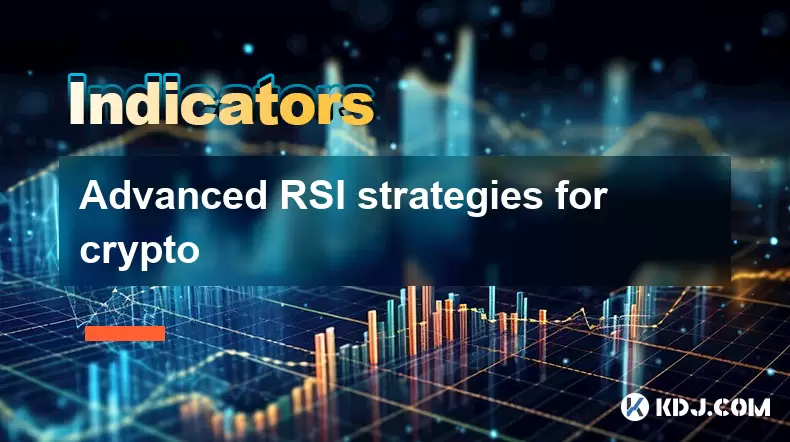
Advanced RSI strategies for crypto
Jul 13,2025 at 11:01am
Understanding the Basics of RSI in Cryptocurrency TradingThe Relative Strength Index (RSI) is a momentum oscillator used to measure the speed and chan...
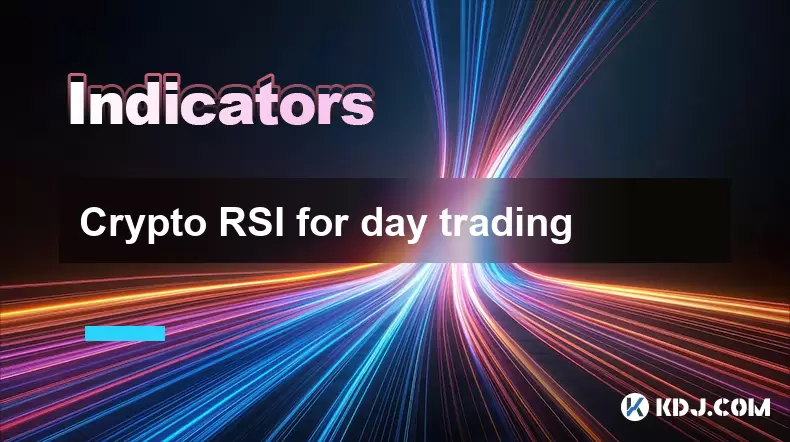
Crypto RSI for day trading
Jul 12,2025 at 11:14am
Understanding RSI in the Context of Cryptocurrency TradingThe Relative Strength Index (RSI) is a momentum oscillator used to measure the speed and cha...
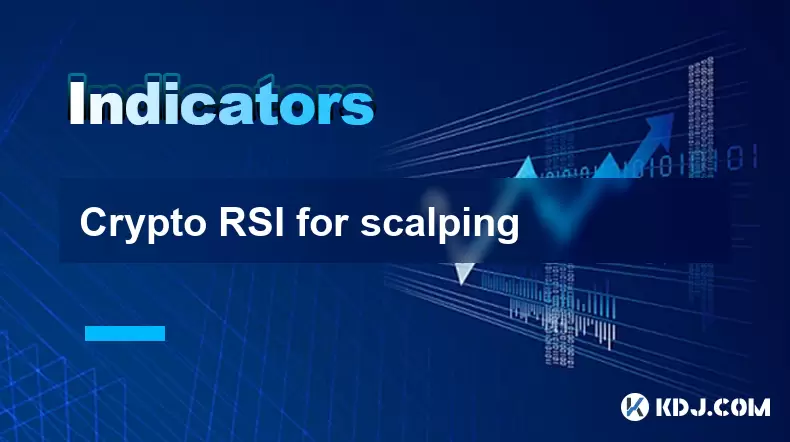
Crypto RSI for scalping
Jul 12,2025 at 11:00pm
Understanding RSI in the Context of Crypto TradingThe Relative Strength Index (RSI) is a momentum oscillator widely used by traders to measure the spe...
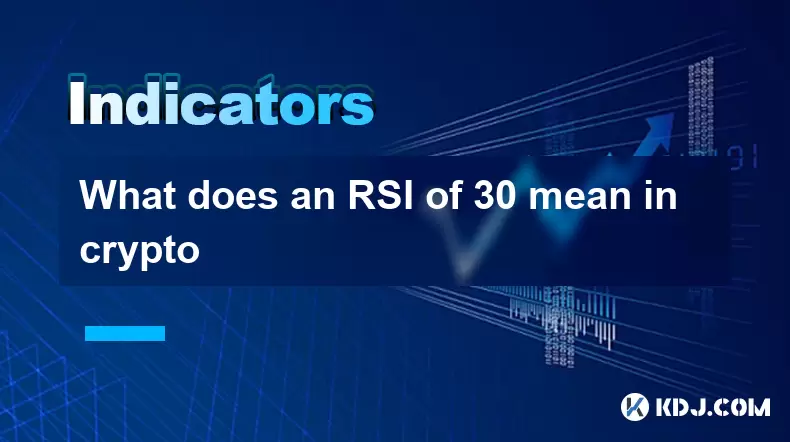
What does an RSI of 30 mean in crypto
Jul 15,2025 at 07:07pm
Understanding RSI in Cryptocurrency TradingRelative Strength Index (RSI) is a momentum oscillator widely used in cryptocurrency trading to measure the...
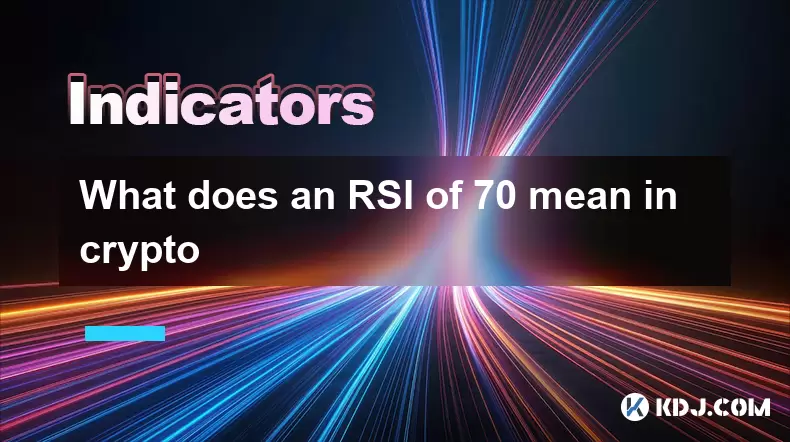
What does an RSI of 70 mean in crypto
Jul 13,2025 at 06:07pm
Understanding the RSI Indicator in Cryptocurrency TradingThe Relative Strength Index (RSI) is a widely used technical analysis tool that helps traders...
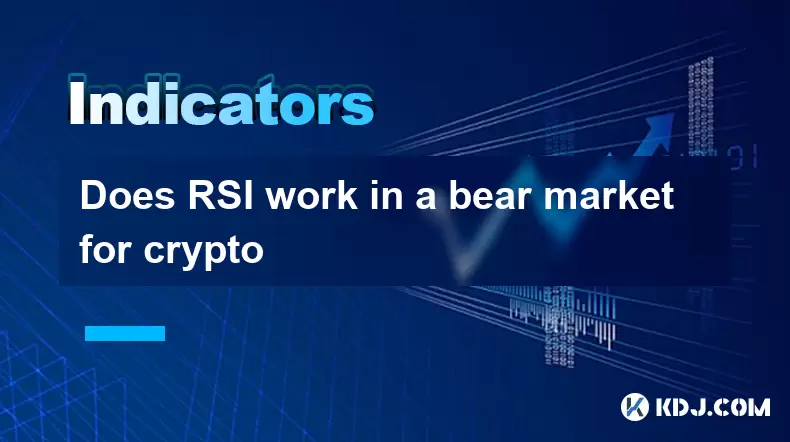
Does RSI work in a bear market for crypto
Jul 16,2025 at 01:36pm
Understanding RSI in Cryptocurrency TradingThe Relative Strength Index (RSI) is a momentum oscillator used by traders to measure the speed and change ...

Advanced RSI strategies for crypto
Jul 13,2025 at 11:01am
Understanding the Basics of RSI in Cryptocurrency TradingThe Relative Strength Index (RSI) is a momentum oscillator used to measure the speed and chan...

Crypto RSI for day trading
Jul 12,2025 at 11:14am
Understanding RSI in the Context of Cryptocurrency TradingThe Relative Strength Index (RSI) is a momentum oscillator used to measure the speed and cha...

Crypto RSI for scalping
Jul 12,2025 at 11:00pm
Understanding RSI in the Context of Crypto TradingThe Relative Strength Index (RSI) is a momentum oscillator widely used by traders to measure the spe...

What does an RSI of 30 mean in crypto
Jul 15,2025 at 07:07pm
Understanding RSI in Cryptocurrency TradingRelative Strength Index (RSI) is a momentum oscillator widely used in cryptocurrency trading to measure the...

What does an RSI of 70 mean in crypto
Jul 13,2025 at 06:07pm
Understanding the RSI Indicator in Cryptocurrency TradingThe Relative Strength Index (RSI) is a widely used technical analysis tool that helps traders...

Does RSI work in a bear market for crypto
Jul 16,2025 at 01:36pm
Understanding RSI in Cryptocurrency TradingThe Relative Strength Index (RSI) is a momentum oscillator used by traders to measure the speed and change ...
See all articles
























